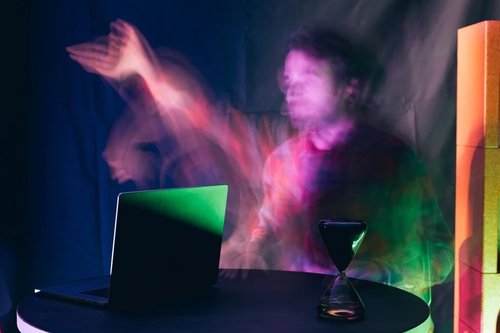Innovation: What you could learn from the world's famous chefs
Oct 16, 2020
6 mins


Our world is becoming increasingly uncertain. With more epidemics, climate change-related disasters, and new business models and technologies, companies and workers must operate in a more complex world in which it’s increasingly hard to plan ahead. In the 20th century, you had to be efficient, by developing repeatable and reliable processes, which came with the division of labor and scientific management. By contrast, in today’s world, you need to innovate to survive. But how does a team become more innovative? And how do you manage a team you want to be innovative?
Vaughn Tan believes the “uncertainty mindset” is what you need. An assistant professor of strategy and entrepreneurship in London, Vaughn Tan used to work for Google in California. He knows a lot about innovation and management. For his book The Uncertainty Mindset (2020), he studied the workings of R&D labs in the world of high-end cuisine and wrote a fascinating account of how top chefs and their teams approach innovation. And he explains how these insights can be relevant to other teams.
“At the frontiers of food, I discovered a fundamentally different approach to innovation that I became increasingly convinced was relevant beyond cuisine. Cutting-edge cuisine is a model system for understanding the uncertainty mindset and its consequences for organizations in other industries.”
As Vaughn Tan explores the lessons managers and innovators can learn from the world’s best chefs and their teams, he makes a compelling case for a managerial paradigm shift. In the old paradigm, you had to give each worker a fixed, clearly-defined role. By contrast, roles must be open-ended and changing in a team designed for innovation. They must be able to learn constantly from one another and the uncertainty mindset must suffuse and influence how their work is organized.
“Innovation is inherently truly uncertain. With innovation work, you don’t know what you’re looking for until you find it or create it. Uncertainty is an inescapable part of trying to do something that has not been done or even imagined before.”
“The lived reality of innovation work is that it is therefore messy and chaotic, filled with ambiguity and friction. Innovation arises out of creative dissonance between different worldviews, different domains of work, and different ideas of value.”
“Effective innovation management involves training people and designing teams to be willing and able to discard what they have become good at and become good at something else.”
- Vaughn Tan in The Uncertainty Mindset.
The uncertainty mindset and what it means for the organization of work
The world of high-end cuisine used to be less uncertain. In fact your ability to thrive in that world depended a lot on your ability to be both efficient and consistent, i.e. to work in an environment where you succeeded in eliminating uncertainty. The best restaurants were praised for the quality of their execution rather than their ability to innovate. With high overhead costs, low margins, and customers that valued consistency, innovation was the enemy. “Innovation foils attempts to be consistent and efficient. Every new dish introduced means the kitchen has to relearn how to be consistent and efficient”.
To be efficient, you have to design your kitchen so that everything and everyone has a clearly-defined place. Roles are clearly defined. There is a station for each task (or group of tasks) so people can become excellent at what they do. If all you do is grill meat, you become excellent at grilling meat. You’re as fast and efficient at your job as you can possibly be when it’s your specialty and you repeat a task many times a day. In that respect, the world of high-end cuisine mirrored the Fordist age as it relied on the division of labor and scientific management.
Over the past two decades, a revolution happened in high-end cuisine. Food bloggers, social networks, pioneering research, and a global elite of novelty-hungry food aficionados changed high-end cuisine. Innovation and creativity became more important than consistency. “In high-end cuisine, the revolution of the last decade brought innovation from the margin to the center.” New ingredients, dishes, cooking methods, and cooking processes are the four types of innovation in cuisine.
R&D labs and innovative chefs transformed how high-end cuisine works. Vaughn Tan observed closely how some of these teams created innovation. He followed several R&D teams such as ThinkFoodGroup, the Fat Duck Experimental Kitchen, the Cooking Lab, and Noma. Here’s what he found out about the way they worked: “Unsurprisingly, chefs attracted to R&D work often have a fundamentally different mindset, one more oriented to exploration and amenable to uncertainty and failure than the mindset of chefs primarily attracted to the rush of service.”
“R&D teams in cutting-edge cuisine saw the world in a fundamentally different way—not as risky, but as truly uncertain. True uncertainty is a different form of uncertainty that cannot be measured and cannot be eliminated using strategies chosen based on likelihood of outcomes.” True uncertainty can best be described as a world of unknown unknowns as opposed to known unknowns which allow you to plan ahead.
The most important thing about these teams suffused with the uncertainty mindset is that their members do not have fixed, clearly-defined roles. To be continually adaptive and capable of dealing with uncertainty, they must be learning continuously and have constantly evolving roles. And they don’t need planning and management oversight. They learn by doing, they accept failure and they learn from one another by exchanging impressions all the time.
Most managers think of jobs as “monolithic things” with tasks and skills that can be summed up together in a neat job description. But in adaptive, innovative teams, jobs are redefined daily. They change depending on circumstances, but also through constant interactions with the team. By learning what others are good at, they discover what they themselves are good at. “The adaptation was possible because the teams had processes for identifying, testing, and confirming changes to the sets of modules that made up team member roles.”
Last but not least, the team can’t be given fixed, clearly-defined goals that would leave no room for innovation and unique solutions. “Choosing to pursue open-ended goals permits and encourages familiar innovation.”
When it comes to innovation, motivation is paradoxical
How do you motivate a team to take on hard challenges and explore untested paths? Innovation requires a level of discomfort that nobody in their right mind will seek. It requires uncertainty, stress, and emotional pain. Tan gives the example of an R&D team tasked with launching three new restaurants at once in a previously unknown city, i.e. creating new menus, with new ingredients and constraints, in a limited time. The team had to suffer high levels of stress, a high probability of failure, lack of sleep, and lots of discomfort.
“They know in their heads that they have to fail before they can get anywhere—but in their hearts they can’t help being scared to fail. This is the biggest thing blocking us from real creativity.”
“They all described the same situation: knowing intellectually that they had to do something they weren’t yet good at but being blocked by a deep-seated emotional fear of not doing well.”
Everyone, including true innovators, dislikes going into discomfort, but that’s still what’s necessary to achieve anything worthwhile. So you need the motivation to stay in that level of discomfort for long enough to be creative. You need to be pushed into it. Tan sums up the motivation paradox with the phrase “desperation by design”. A project that’s too difficult for a team’s current abilities will produce some “desperation”, but also force “team members to take on new roles” and “figure out new ways to work together”.
According to the author, for your “desperation by design” to generate innovative ideas, you need three things:
The project that the team takes on must be beyond its current abilities. But it’s a fine line. It must be slightly beyond its abilities. If it is too far off, the team may break.
There must be a real risk that the project might fail, which would cause reputational damage both to the team and its members. Their reputation is on the line.
There must be an irrevocable commitment to it. Either they committed to doing the project publicly, or substantial sums of money have already been spent. There is no dropping the project halfway through.
The 6 insights from the “frontiers of food” that all innovators should heed
Individual roles are provisional, modular and adaptable. They evolve, component by component. This is what makes the whole team adaptive and innovative.
Individuals pay close attention to their fellow team members. As their own roles are continually changing, they need to learn to be highly responsive to their colleagues and to the environment. They learn to become super sensitive.
The goals they pursue are open-ended. Clearly defined goals prevent innovation whereas ambiguously defined goals leave room for innovation.
Individuals learn by doing actual work. Through numerous routine interactions with their fellow team members, they learn about excellence, and the unique style of their team (chef/restaurant).
Innovation needs “desperation by design”. Innovation is emotionally challenging because we have a “visceral aversion to uncertainty and failure”. So innovators need well-chosen sticks.
The overload that generates innovation needs to be progressive. “The key to making overload productive is to overload progressively so that the organization’s individual and collective capacity grows gradually”.

More inspiration: Laetitia Vitaud
Future of work author and speaker

Age does matter, at work and in the White House
What we've learned from the 2024 presidential elections about aging at work.
Sep 09, 2024

Can companies avoid a brain drain as retirements surge?
Bye bye, Baby Boomers. Hello, knowledge exodus?
Jun 12, 2024

Workplace anxiety: Navigating the future of work in an anxious world
Anxiety has taken center stage in our modern world. How is it shaping the future of work? And most of all, what can we do about it?
May 20, 2024

Why recruiters should hire more ex-freelancers
While freelance and salaried work can seem worlds apart, they may have more in common than you think.
May 02, 2024

How women over 50 are reinventing their careers and the future of work
Women in their 20s struggle to be taken seriously, while middle-aged women battle discrimination... So how are women over 50 reinventing the wheel?
Apr 02, 2024
Inside the jungle: The HR newsletter
Studies, events, expert analysis, and solutions—every two weeks in your inbox

